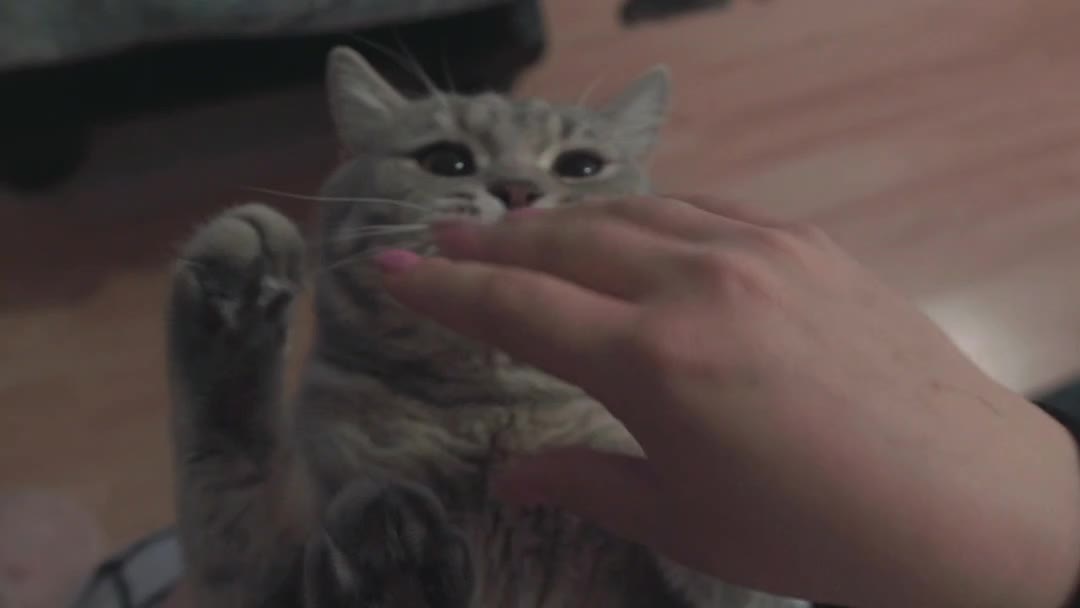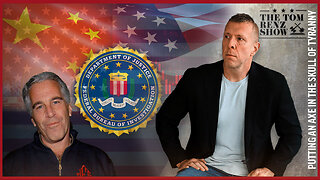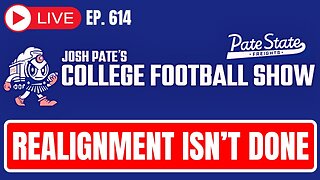Premium Only Content

The breed's good-natured appearance and relatively calm temperament.
The British Shorthair is the pedigreed version of the traditional British domestic cat, with a distinctively stocky body, dense coat, and broad face. The most familiar colour variant is the "British Blue", with a solid grey-blue coat, orange eyes, and a medium-sized tail. The breed has also been developed in a wide range of other colours and patterns, including tabby and colourpoint.
British Shorthair
British blue 2009 (cropped).jpg
British Shorthair in the classic colour ’blue’.
Other names
British Blue (legacy)
Origin
United Kingdom
Breed standards
CFA
standard
FIFe
standard
TICA
standard
WCF
standard
FFE
standard
ACF
standard
ACFA/CAA
standard
CCA-AFC
standard
Domestic cat (Felis catus)
It is one of the most ancient cat breeds known. In modern times, it remains the most popular pedigreed breed in its native country, as registered by the UK's Governing Council of the Cat Fancy (GCCF). A quarter of all kittens registered with the GCCF each year are British Shorthairs, making the British the most popular pedigree cat in the UK.[1]
The breed's good-natured appearance and relatively calm temperament make it a frequent media star, notably as the inspiration for John Tenniel's famous illustration of the Cheshire Cat from Alice in Wonderland. The Cat Fanciers' Association profile reads: "When gracelessness is observed, the British Shorthair is duly embarrassed, quickly recovering with a 'Cheshire cat smile'."[2]
History
Edit
The origins of the British Shorthair most likely date back to the first century AD, making it one of the most ancient identifiable cat breeds in the world.[3] These cats were imported by the Romans who kept them to keep the camps clear of snakes, mice and insects.
These cats then interbred with the local European wildcat population. Over the centuries, their naturally isolated descendants developed into distinctively large, robust cats with a short but very thick coat, to better withstand conditions on their native islands. Based on artists' representations, the modern British Shorthair is unchanged from this initial type.[4]
An early example of the "English type" Blue Shorthair, from Frances Simpson's Book of the Cat, 1903
Selective breeding of the best examples of the type began in the nineteenth century, with emphasis on developing the unusual blue-grey variant called the "British Blue" or "English type" (to distinguish it from the more fine-boned "Russian type"). Some sources directly credit UK artist, and pioneering cat fancier, Harrison Weir with the initial concept of standardising the breed. Others suggest a group of breeders may have been involved. The new British Shorthair was featured at the first-ever cat show, organised by Weir and held at the Crystal Palace in London in 1871, and enjoyed great initial popularity.[5]
By the 1900s with the advent of the newly imported Persian and other long-haired breeds, the British Shorthair had fallen out of favour, and breeding stock had become critically rare by World War I.[6] At least partially to alleviate this, British Shorthair breeders mixed Persians into their bloodlines.[7] The genes thus introduced would eventually become the basis for the British Longhair. At the time, any long-haired cats produced were placed into the Persian breeding program.[8] As all cats with the blue colouration were then judged together as variants on a de facto single breed. The Blue Shorthair, outcrossings of the British with the Russian Blue were also common.[4]
A young British Blue male showing the copper eyes typical of cats with 'blue' fur
After the war, in an attempt to maintain the breed standard, the GCCF decided to accept only third-generation Persian/British Shorthair crosses.[citation needed] This contributed to another shortage of pure breeding stock by World War II, at which point the Persian and Russian Blue were reintroduced into the mix.[citation needed] British Shorthair breeders also worked with the French Chartreux, another ancient breed, which although genetically unrelated to the British Blue, is a very similar cat in appearance. Breeders worked to re-establish the true British type, and by the late 1970s, the distinctive British Shorthair had achieved formal recognition from both the Cat Fanciers' Association (CFA) and The International Cat Association (TICA).[4] According to the GCCF's 2013 registry data, it is once again the most popular pedigreed breed in its native country.[9]
-
 LIVE
LIVE
Slightly Offensive
2 hours agoCandace REDPILLS the Masses in BOMBSHELL Theo Von Interview | Guest: Shane Cashman
851 watching -
 LIVE
LIVE
megimu32
2 hours agoON THE SUBJECT: IRL Streamers Attacked & Nostalgic Animal Movies That Made Us Cry
126 watching -
 1:00:54
1:00:54
The Tom Renz Show
5 hours agoMore Epstein/FBI, a Scary Trade War, & the Dem Echo Chamber
540 -
 40:43
40:43
Kimberly Guilfoyle
6 hours agoDems Double Down on Delusion-Why? Live with Tony Kinnett & Bo French | Ep.202
48.1K30 -
 1:28:42
1:28:42
Redacted News
4 hours agoBREAKING! SOMETHING BIG IS HAPPENING IN EUROPE ALL OUT WAR IS COMING AGAINST RUSSIA, TRUMP FURIOUS
95.4K230 -
 47:50
47:50
Candace Show Podcast
5 hours agoBREAKING: Judge Makes Statement Regarding Taylor Swift's Text Messages. | Candace Ep 155
77.1K92 -
 LIVE
LIVE
Josh Pate's College Football Show
2 hours agoCFB’s Most Hated Teams | FSU & Clemson Future | Big Ten Win Totals | Star Rankings Overrated?
88 watching -

CatfishedOnline
3 hours agoGoing Live With Robert - Weekly Recap
6.88K -
 55:18
55:18
LFA TV
1 day agoEurope’s Sudden Turn Against America | TRUMPET DAILY 3.6.25 7PM
11.6K2 -
 4:21
4:21
Tundra Tactical
3 hours agoPam Bondi MUST Enforce Due Process NOW!
9.43K